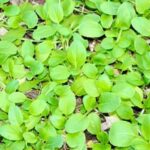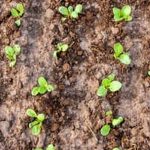Vegetable gardening in Ontario, Canada has become increasingly popular among both seasoned gardeners and beginners alike. The trend towards growing one’s own produce has been fueled by a desire for fresh, organic options and a more sustainable lifestyle. With the abundance of green spaces and fertile soil in Ontario, it’s no wonder that vegetable gardening has taken root in this region.
One of the key factors contributing to the rise in vegetable gardening in Ontario is the growing awareness of where our food comes from. Many people are opting to plant their own vegetable gardens to have full control over the quality and safety of the produce they consume. Additionally, the satisfaction of harvesting your own fruits and vegetables right from your backyard is a rewarding experience that many Ontarians are embracing.
In this article, we will explore the best vegetable varieties suited for Ontario’s unique climate, provide tips on preparing the soil for successful gardening, discuss planting timelines for optimal growth, strategies for pest control, proper watering techniques, guidelines on harvesting and storing produce, as well as resources available within the community to support vegetable gardening efforts.
Whether you’re a seasoned gardener or just starting out, vegetable gardening in Ontario offers a plethora of benefits for those willing to get their hands dirty.
Best Vegetable Varieties for Ontario Climate
When it comes to vegetable gardening in Ontario, Canada, choosing the right varieties of vegetables that thrive in the unique climate of the region is crucial for a successful harvest. Below are some of the best vegetable varieties that are well-suited for Ontario’s climate:
- Tomatoes: Tomatoes are a popular choice for many vegetable gardeners in Ontario due to their versatility and ability to grow well in the region’s climate. Varieties such as Beefsteak, Roma, and Cherry tomatoes are well-adapted to Ontario’s growing conditions.
- Peppers: Bell peppers, jalapenos, and banana peppers are excellent choices for Ontario vegetable gardens. These varieties require warm temperatures to thrive, making them ideal for Ontario’s short growing season.
- Carrots: Carrots are root vegetables that grow successfully in Ontario’s fertile soil. Varieties like Nantes, Chantenay, and Cosmic Purple carrots are well-suited for Ontario gardeners looking to add some color and nutrition to their harvest.
In addition to these popular vegetable varieties, other suitable options for vegetable gardening in Ontario include cucumbers, zucchini, lettuce, beans, and herbs like basil and parsley. By selecting varieties that are specifically adapted to Ontario’s climate and soil conditions, gardeners can increase their chances of a bountiful harvest.
When planning your vegetable garden in Ontario, consider factors such as sunlight exposure, soil quality, and water availability to ensure optimal growth for your chosen vegetable varieties. With proper care and attention to the specific needs of each plant type, you can enjoy a successful vegetable garden in the diverse climate of Ontario.
Preparing the Soil
The key to successful vegetable gardening in Ontario, Canada begins with ensuring that the soil is rich, well-draining, and nutrient-dense. Before planting any vegetables, it is essential to prepare the soil properly. One of the first steps is to test the soil pH levels to determine its acidity or alkalinity.
Most vegetables prefer a slightly acidic soil with a pH level between 6.0 and 7.0. You can easily test the soil pH using a DIY kit or by sending a sample to a local agricultural extension office.
Once you have determined the pH level of your soil, it’s time to amend it accordingly. Adding organic matter such as compost, aged manure, or leaf mold can help improve soil structure and fertility. Work these amendments into the top few inches of the soil using a shovel or tiller. Additionally, incorporating some organic material will increase microbial activity in the soil, aiding in nutrient absorption by plant roots.
Proper drainage is crucial for healthy vegetable plants as waterlogged soils can lead to root rot and other diseases. To improve drainage, consider adding some coarse sand or perlite to heavy clay soils.
Raised beds are also an excellent option for vegetable gardening in Ontario as they provide better drainage and warmer soil temperatures early in the season. By taking the time to prepare your soil correctly before planting, you’ll set your vegetable garden up for success throughout the growing season.
| Soil Preparation Tips | Key Techniques |
|---|---|
| Test Soil pH | Determine acidity levels for proper amendments |
| Add Organic Matter | Improve soil structure and fertility |
| Ensure Proper Drainage | Avoid waterlogged conditions for healthy plants |
Planting Timeline
Spring Planting
In Ontario, the spring planting season typically begins in late April or early May, once the threat of frost has passed. Cool-season vegetables like peas, lettuce, spinach, and radishes can be directly sown into the soil during this time. These crops thrive in cooler temperatures and will benefit from an early start to the growing season.
Summer Planting
As the weather warms up in Ontario, it’s time to plant warm-season vegetables such as tomatoes, peppers, cucumbers, squash, and beans. These plants require warmer soil and air temperatures to grow successfully. In most regions of Ontario, summer planting can begin in late May through June. Be sure to provide adequate support for vining plants like tomatoes and cucumbers to encourage healthy growth.
Fall Planting
For a longer harvest season, consider fall planting certain vegetables that can withstand cooler temperatures. Vegetables like carrots, beets, kale, and Brussels sprouts can be planted in late summer or early fall for a late-season harvest. Extend your growing season by protecting these crops with row covers or cold frames as the temperatures begin to drop in Ontario.
By following this detailed planting timeline for different vegetables in Ontario, you can ensure optimal growth and a bountiful harvest throughout the growing season. Pay attention to each crop’s specific requirements for sunlight, spacing, and watering to maximize your vegetable gardening success in Ontario Canada.
Pest Control
Another pesky intruder that gardeners often encounter in Ontario is the cabbage worm, which feeds on cabbage, broccoli, and other similar vegetables. To combat these worms, planting garlic or onions near susceptible plants can help repel them. Additionally, introducing beneficial insects like ladybugs or parasitic wasps can also aid in controlling cabbage worm populations naturally.
Fungal diseases such as powdery mildew and blight are also prevalent in Ontario’s humid climate and can affect a variety of vegetables. To prevent these diseases, it is essential to practice good watering techniques by avoiding overhead watering and providing adequate spacing between plants for proper air circulation. Applying organic fungicides like copper spray or sulfur powder can also help protect your vegetable garden from fungal infections.
By being vigilant and implementing these pest control strategies, you can effectively safeguard your vegetable garden in Ontario against common pests and diseases. Remember that prevention is key when it comes to managing pests and diseases in your garden, so regular monitoring of your plants for any signs of trouble is essential for maintaining a healthy and productive vegetable garden in Ontario Canada.
Watering and Maintenance
Watering is a crucial aspect of vegetable gardening in Ontario, Canada, especially during the hot summer months. The amount of water needed by your plants can vary depending on factors such as the type of vegetables you are growing, soil composition, and weather conditions. It is essential to water your vegetable garden deeply but infrequently to encourage deep root growth and prevent shallow rooting.
One effective method for proper watering is using a drip irrigation system. Drip irrigation delivers water directly to the roots of plants, reducing evaporation and ensuring efficient water usage. This method also helps in minimizing weed growth since the surface remains dry. Alternatively, you can opt for soaker hoses or watering cans to provide a slow and steady stream of water directly to the base of your plants.
Maintaining a healthy vegetable garden in Ontario involves regular weeding to prevent competition for nutrients and reduce the risk of disease. Mulching around your plants can help retain moisture in the soil, regulate soil temperature, and suppress weeds. Additionally, monitoring your garden for signs of pests or diseases is essential for early detection and control. Implementing crop rotation practices can also help maintain soil health and reduce the buildup of pests and diseases over time.
| Aspect | Recommendation |
|---|---|
| Watering | Use drip irrigation system for efficient water delivery |
| Weeding | Regularly remove weeds to prevent competition for nutrients |
| Mulching | Mulch around plants to retain moisture and suppress weeds |
Harvesting and Storing
When it comes to vegetable gardening in Ontario, Canada, knowing when and how to harvest your produce is essential for enjoying fresh and flavorful vegetables. Harvesting at the right time ensures that you get the best taste and nutritional value from your crops. Proper storage methods also play a crucial role in extending the shelf life of your vegetables, allowing you to enjoy them for longer periods.
To help you make the most of your vegetable garden in Ontario, here are some guidelines on harvesting and storing different types of vegetables:
1. Leafy Greens: Vegetables like lettuce, kale, spinach, and Swiss chard can be harvested by picking individual leaves or cutting entire plants. For leafy greens, it’s best to harvest them in the morning when they are crisp and full of moisture. To store leafy greens, wash them thoroughly, dry them with a paper towel, and place them in a breathable container or plastic bag in the refrigerator.
2. Root Vegetables: Carrots, beets, radishes, and turnips should be harvested when they reach their mature size. Gently pull these vegetables out of the ground or use a garden fork to loosen the soil around them before harvesting. After harvesting root vegetables, remove any excess soil but avoid washing them to prevent rotting. Store root vegetables in a cool, dark place like a root cellar or refrigerator crisper drawer.
3. Tomatoes: Tomatoes should be harvested when they are fully ripe but still firm to the touch. Pick tomatoes with their stems attached to prolong shelf life. Store ripe tomatoes at room temperature until they reach your desired level of ripeness if needed. Once ripe, refrigerate tomatoes to slow down ripening process and extend their freshness.
By following these guidelines for harvesting and storing vegetables from your garden in Ontario Canada properly, you can enjoy a bountiful harvest throughout the growing season while minimizing food waste and maximizing flavor and nutrition in your dishes.
Community Resources
Local Agricultural Extension Services
One valuable resource for individuals interested in vegetable gardening in Ontario, Canada is the local agricultural extension services. These services provide a wealth of information on various aspects of gardening, including soil preparation, plant selection, pest control, and more. They often offer workshops, seminars, and educational materials to help both novice and experienced gardeners achieve success in their vegetable gardens.
Farmers’ Markets and Seed Exchanges
Farmers’ markets are not only great places to purchase fresh produce but also excellent resources for connecting with local growers and learning about different vegetable varieties that thrive in Ontario’s climate. Additionally, many farmers’ markets host seed exchanges where community members can swap seeds, allowing gardeners to experiment with new plant varieties without having to make a financial commitment. This can be a fun way to diversify your vegetable garden and contribute to the local gardening community.
Community Gardens and Allotment Programs
For individuals who may not have access to suitable gardening space at home, community gardens and allotment programs in Ontario offer a fantastic opportunity to get involved in vegetable gardening. These initiatives provide shared plots of land where participants can grow their own vegetables while socializing with other like-minded individuals.
Community gardens create a sense of camaraderie among participants, as they work together to cultivate fresh produce and enjoy the fruits of their labor. Joining a community garden or allotment program is an excellent way to engage with the local vegetable gardening community and learn from experienced gardeners in Ontario.
Conclusion
In conclusion, vegetable gardening in Ontario, Canada offers a plethora of benefits and rewards for those who choose to embark on this fulfilling journey. The popularity of vegetable gardening in the region can be attributed to its unique climate, which supports the growth of various plants throughout the year. From tomatoes to carrots to zucchinis, there is a wide variety of vegetable varieties that thrive in Ontario’s conducive environment.
By following the tips and techniques outlined in this article, aspiring gardeners can successfully prepare their soil, plant at the appropriate times, control pests and diseases effectively, ensure proper watering and maintenance practices, harvest vegetables at the right time, and store them correctly for longer shelf life. Additionally, taking advantage of local resources such as community gardens, events, and organizations can provide valuable support and guidance for novice gardeners looking to enhance their skills.
Therefore, I encourage all readers who are interested in exploring the world of vegetable gardening in Ontario Canada to take the first step towards starting their own garden. Whether you have a spacious backyard or just a small balcony space, growing your own vegetables can be a rewarding experience that not only provides you with fresh produce but also allows you to connect with nature and enjoy the fruits of your labor.
So grab your gardening tools, pick out your favorite vegetables to grow, and let’s start cultivating a flourishing vegetable garden together.
Frequently Asked Questions
What Vegetables Grow Well in Ontario?
Ontario’s climate and soil conditions make it conducive to growing a variety of vegetables. Some vegetables that grow well in Ontario include tomatoes, peppers, beans, carrots, cucumbers, and lettuce. These vegetables thrive in the region’s temperate climate and fertile soil.
When Should You Plant Vegetable Garden Ontario?
The best time to plant a vegetable garden in Ontario is typically after the last frost date, usually around late May or early June. Planting too early can expose your plants to cold temperatures that can stunt their growth or even kill them. It’s important to wait until the soil has warmed up before planting.
What Vegetables Are Easy to Grow in Canada?
Canada’s cooler climate may present some challenges for growing certain vegetables, but there are plenty of options that are easy to grow in the country. Vegetables like leafy greens (lettuce, spinach), root vegetables (carrots, radishes), beans, peas, and herbs tend to do well in Canadian climates. These vegetables are relatively low-maintenance and adaptable to varying weather conditions.

If you’re looking to get into vegetable gardening, or are just looking for some tips on how to make your current garden better, then you’ve come to the right place! My name is Ethel and I have been gardening for years. In this blog, I’m going to share with you some of my best tips on how to create a successful vegetable garden.





